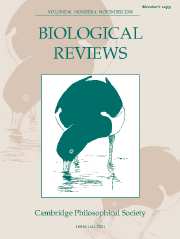Article contents
Revealing metabolic phenotypes in plants: inputs from NMR analysis
Published online by Cambridge University Press: 11 January 2005
Abstract
Assessing the performance of the plant metabolic network, with its varied biosynthetic capacity and its characteristic subcellular compartmentation, remains a considerable challenge. The complexity of the network is such that it is not yet possible to build large-scale predictive models of the fluxes it supports, whether on the basis of genomic and gene expression analysis or on the basis of more traditional measurements of metabolites and their interconversions. This limits the agronomic and biotechnological exploitation of plant metabolism, and it undermines the important objective of establishing a rational metabolic engineering strategy. Metabolic analysis is central to removing this obstacle and currently there is particular interest in harnessing high-throughput and/or large-scale analyses to the task of defining metabolic phenotypes. Nuclear magnetic resonance (NMR) spectroscopy contributes to this objective by providing a versatile suite of analytical techniques for the detection of metabolites and the fluxes between them.
The principles that underpin the analysis of plant metabolism by NMR are described, including a discussion of the measurement options for the detection of metabolites in vivo and in vitro, and a description of the stable isotope labelling experiments that provide the basis for metabolic flux analysis. Despite a relatively low sensitivity, NMR is suitable for high-throughput system-wide analyses of the metabolome, providing methods for both metabolite fingerprinting and metabolite profiling, and in these areas NMR can contribute to the definition of plant metabolic phenotypes that are based on metabolic composition. NMR can also be used to investigate the operation of plant metabolic networks. Labelling experiments provide information on the operation of specific pathways within the network, and the quantitative analysis of steady-state labelling experiments leads to the definition of large-scale flux maps for heterotrophic carbon metabolism. These maps define multiple unidirectional fluxes between branch-points in the metabolic network, highlighting the existence of substrate cycles and discriminating in favourable cases between fluxes in the cytosol and plastid. Flux maps can be used to define a functionally relevant metabolic phenotype and the extensive application of such maps in microbial systems suggests that they could have important applications in characterising the genotypes produced by plant genetic engineering.
Keywords
- Type
- Review Article
- Information
- Copyright
- 2005 Cambridge Philosophical Society
- 102
- Cited by


